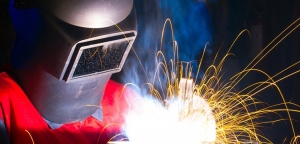Why Do I Need a Repair Inspection to Get My Mobile Crane Certified?

In our previous installment we addressed one of our frequently asked questions, “when do we need a lift plan?” Similarly, this question also ranks high on our frequently asked list.
For this answer, we look no further than standard CSA Z150-2011 which states in clear terms the requirements for a “repair inspection”.
From Section 5.3.5.2:
A structural inspection report shall be prepared containing details of what was inspected and by which method, the location of defects, if any, and the repair procedures and re-inspection of findings along with the opinion of the engineer that the crane is structurally sound when used in accordance with the manufacturer’s instructions.
And also further down, Section 5.4.3.5 states:weld repair
Prior to initial use, all cranes in which load-sustaining parts have been altered, replaced, or repaired shall undergo NDT to verify the integrity of the repair. Written reports shall be furnished showing the test procedures and confirming the adequacy of repairs or alteration and shall be kept as records for further reference.
Granted, the way some CSA clauses are written, there is often room for interpretation and debate. However, in the case of the above the intent is quite clear: a re-inspection of any repaired critical areas using a nondestructive testing method is required!
Use Proper Methods
Occasionally, we are asked if a visual inspection of a repair can be done using photographic evidence. Unfortunately, as written in the above clauses, this method is not recommended.
The standard is very clear – a nondestructive testing method must be applied (usually magnetic particle inspection) to the repaired weld. A written report documenting the test procedure must also be kept on record.
If you are using an inspection company that approves this method – be wary. Should the Ministry come to question it, you may have issues arguing that photographic evidence is a “legitimate” test procedure.
“Trust Us, The Repair Was Done”
This is another phrase we sometimes hear. It’s not an issue of trust – it’s about having the right paper trail to back everything up. Even if the repair is completed, it’s a good idea to test the quality of the repair. A repairs inspection gives you that extra peace of mind the problem was correctly fixed.
Save Time and Money…
Here’s a pro tip – if you have the resources to do so, keep a CWB certified welder on standby to repair any indications on the spot. This way, the inspector may not need to make a separate trip to finish the job.
Unlike most NDT companies who charge a minimum 4 hour callout, we don’t charge any minimum hours for a repairs inspection. Right there that’s a money saver!
…But Don’t Cut Corners!
But the bottom line is, it’s worth making sure your lift equipment is as safe to use as reasonably possible. The advantages of having a quality and proper inspection are numerous:
- Your equipment will last longer;
- You reduce the risk to lives and property as a result of a catastrophic accident;
- Your operators will have greater peace of mind;
- You can prove you’ve done your due diligence.
Do It Right
Our philosophy is that it’s best to do the repairs inspection right the first time. That way you don’t end up paying more for it later.




